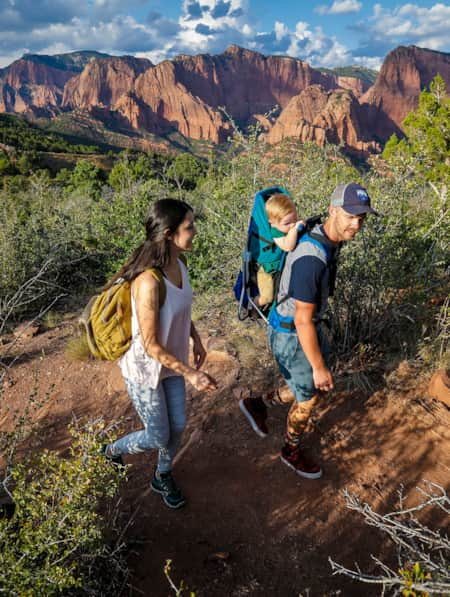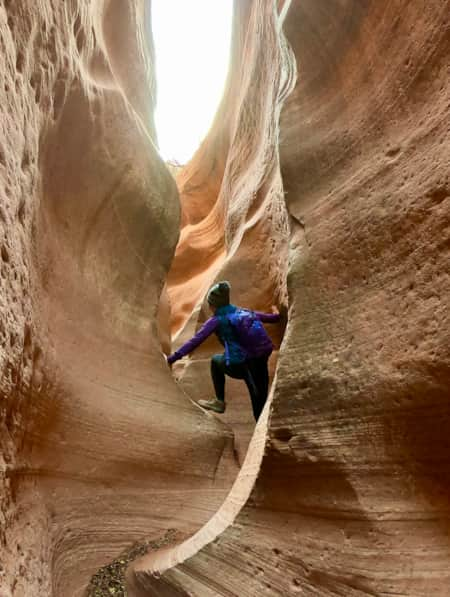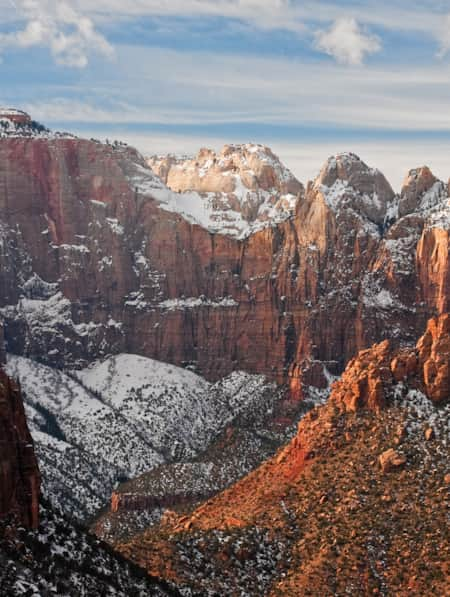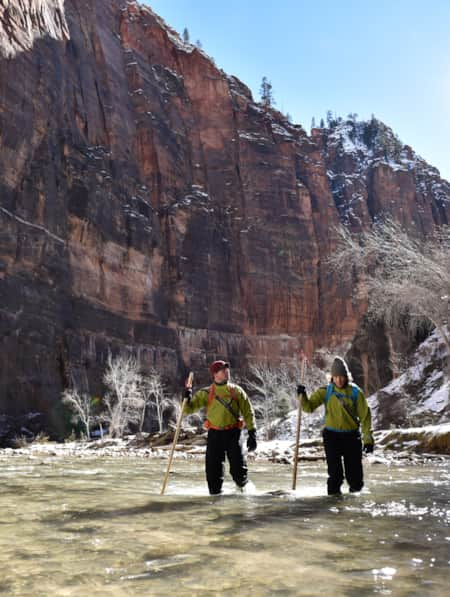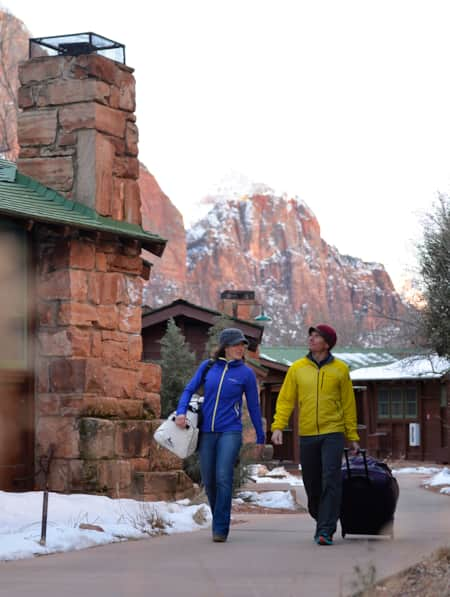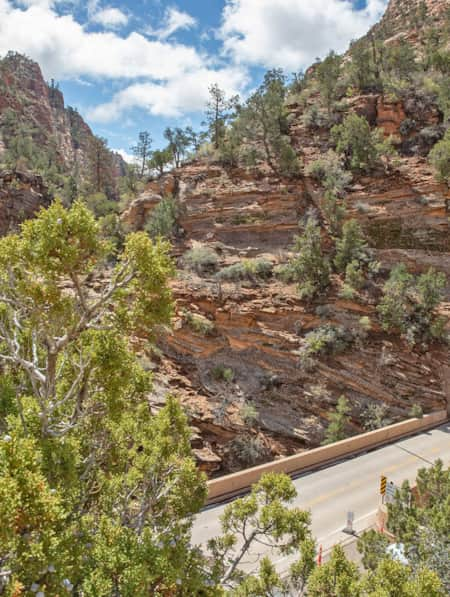Getting to the Park
In 2000, to help solve the traffic and parking problems created by the increase in visitors, Zion instituted a shuttle bus system that’s used for much of the year. More precisely, there are two shuttle systems in operation — one to get visitors to the park and a second to move people around the park. Parking is available in the park, but it’s limited and lots usually fill up by between 8 a.m. and 9 a.m. After that, cars are prohibited. Most people reach the park by shuttle, with parking available in the nearby town of Springdale.
Busy Season
As with most national parks, Zion’s busiest season is when the kids are off school and most people take their vacations. That means weekends much of the year and the most crowded time between Memorial Day and Labor Day. Despite the hot temperatures — and 100-degree days are common — summer draws the biggest crowds. According to park officials, the park’s busiest time is Memorial Day weekend, Easter week, Labor Day weekend and Utah Education Association break (which is in October, and you can find the dates each year at myuea.org).
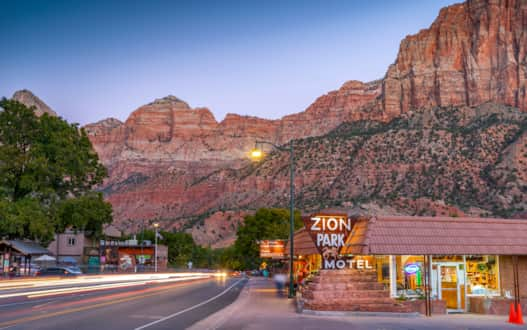
An outside view of the Zion Park Motel.
Photo: Jay Dash
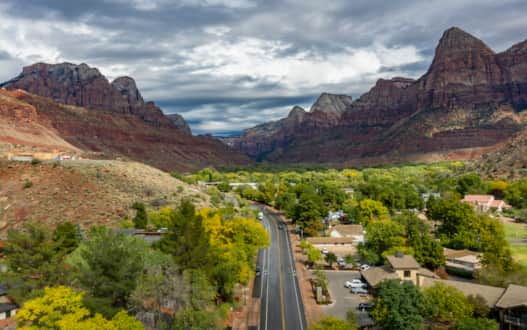
Aerial view of the road leading into Zion National Park.
Photo: Jay Dash
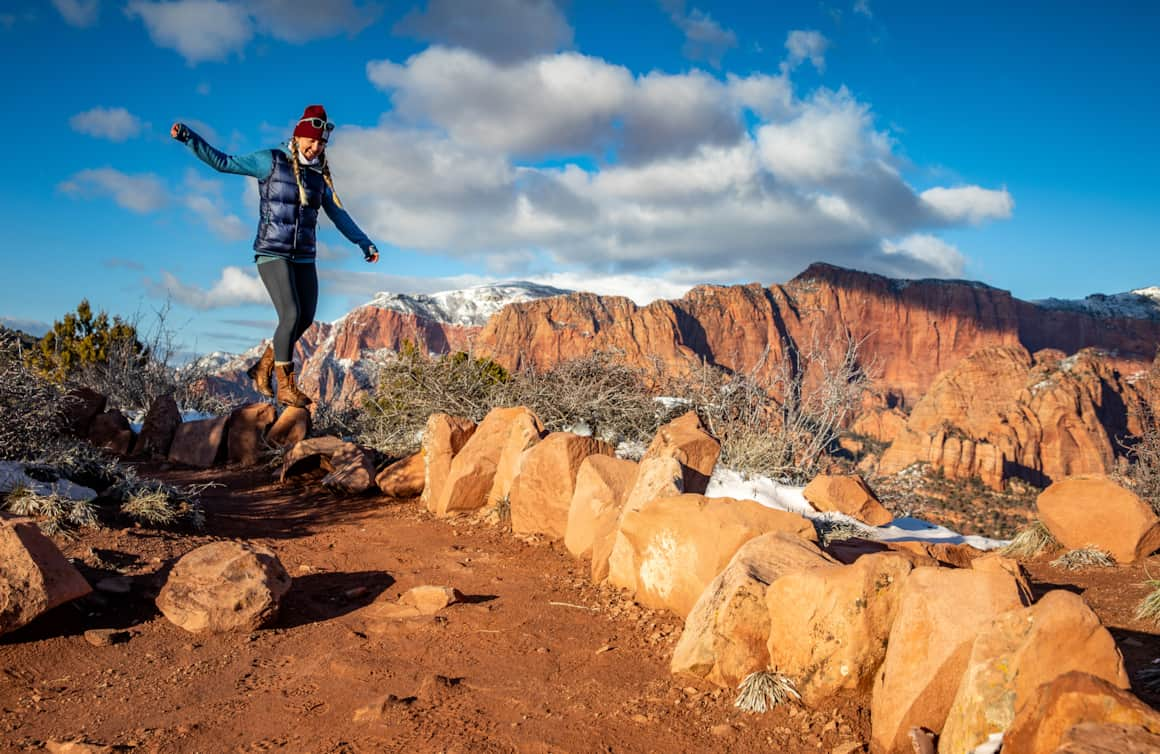
Hiking in Kolob Canyon.
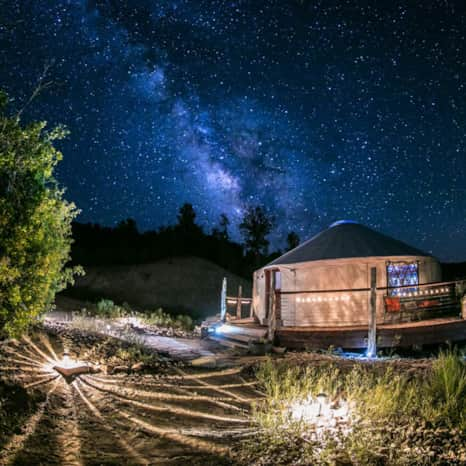
Backcountry yurts are available at Gooseberry Mesa near Zion National Park.
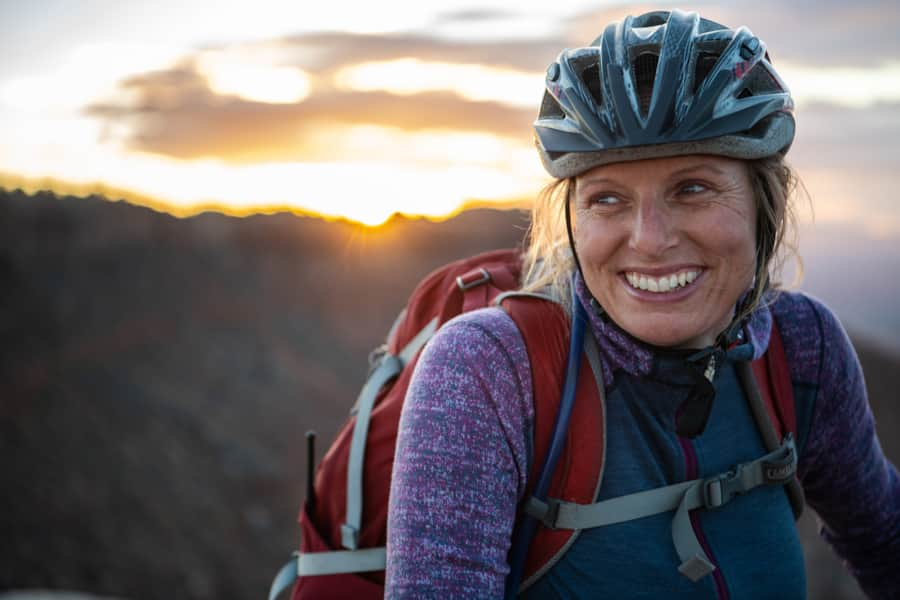
Mountain biking in Gooseberry Mesa.
When to Visit
Fall is probably the best time to visit in terms of moderate weather, cooler temperatures and fewer overall crowds. Do your best to avoid weekends and holidays at any time of the year.
Because of the runoff from snowfall, early spring can make hiking in the canyons difficult, and trails may be closed, although that’s not to say that you can’t find plenty of things to see and do. Just note the park’s biggest draws, particularly the slot canyons, may not be accessible.
If visiting the park off-season or during the week isn’t possible, there are still steps you can take to enjoy a trip without having to hassle with the crowds. Start by planning your trip thoroughly in advance with Zion’s trip planner. If you know where you’re going and what you want to do beforehand, it can help avoid lines at the visitor center and other places.
As for the time of day, plan to arrive as early as possible or later in the afternoon. Particularly in the summer, most people enter early to get their hiking in before the hottest part of the day. Arriving late in the day means less time in the park (keep in mind when shuttle service ends), but the trails can be less crowded then. Staying in one of the three campgrounds inside the park can also help you avoid the congestion that comes with the shuttles.
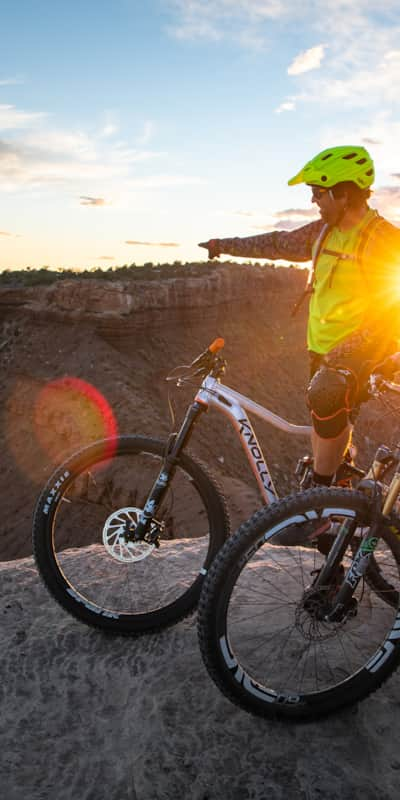
Where to Go
Of course, even if you do all that, there are still going to be people around, but where you travel within the park can make a big difference.
The Kolob Canyons in the northwest section is much less crowded than the rest of the park. Try exploring it if you want some alone time or at least some almost-alone time. If you’re spending multiple days in the park, hit the popular trails on the weekdays and get to know the rest of the park on the weekend.
You may want to take on some of the more challenging hikes in the park, which keeps quite a few people away. Some of these require a permit, which can also help limit the number of people around. The Subway, for example, is a challenging 9.5-mile hike that requires rappelling skills (and 60 feet of rope) when you do it from the top down. If you don’t have those skills, you can do it from the bottom up without the rappelling, but you’ll still have plenty of scrambling to do.
Those traveling with kids can look for adventures that are still accessible but perhaps a bit more of a trip. The Middle Fork of Taylor Creek is about a 2.6-mile trail through a narrow box canyon to the Double Arch Alcove. Much of it is through woodlands that are quite different from the rest of the park. A favorite for kids that doesn’t get too much traffic is in East Zion, where water has run down the rock and carved out pools in the sandstone. During the summer they’re often dry, but still fun to explore.
Another way to escape the crowds is to travel by bike. Bikes are permitted on the park roadways and the Pa’rus Trail. Keep in mind that you must wear a helmet, ride to the right and groups are limited to six bikes or less. If you enjoy cycling, it’s a wonderful way to explore the park.
Zion is filled with incredible opportunities to explore. Take the time to plan things in advance, avoid the busiest times of the year and seek out lesser-known trails, and you’ll enjoy the trip of a lifetime, no matter how many other people are around.
